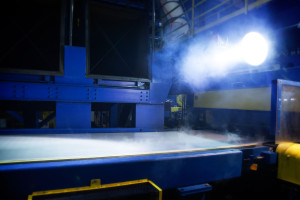
Ford, Alcoa: Micromill aluminum on 2016 F-150 more malleable, but repair procedures won’t change
By onMarket Trends | Repair Operations | Technology
Though stronger and more malleable than other aluminum alloys, the new Micromill aluminum announced for the 2016 Ford F-150 won’t be any easier to repair, Ford and Alcoa said last week.
Ford announced Sept. 14 it would become the first automaker to use Alcoa’s “design-friendly” Micromill alloys, which Alcoa has called 40 percent more formable and 30 percent stronger than regular automotive aluminum.
The two companies elaborated further on the deal in email interviews with Repairer Driven News.
“Micromill metal will be no different than conventional in terms of repair,” Ford global quality communications manager Deeptie Sethi wrote when asked if the new alloy would offer a better “memory.” The answer echoed a similar comment by Alcoa global rolled products and innovation communications director Lori K. Lecker.
Learn more about OEMs, aluminum, steel at SEMA Repairer Driven Education
Those wanting to learn more about what the automakers will be throwing at your shop in the future should attend the special OEM Collision Repair Technology Summit at the SEMA Show as part of the Society of Collision Repair Specialists’ Repairer Driven Education Series. The sessions include “Advanced Automotive Technology,” “The Future of Aluminum in the Automotive Industry” and “The Continuing Evolution of Advanced Steels in Automotive Bodies.” There’ll be a heavy emphasis on joining, lightweight materials and the scans necessary to make sure all the new tech works. Register here.
Lecker confirmed that Ford will replace conventional aluminum F-150 tailgate reinforcement parts with Micromill sometime between October and December. In 2016, Ford will “straight swap” more parts, including aluminum wheelhouses and box crossmembers, she wrote, citing the OEM.
“It is projected Ford’s use of Micromill material on its vehicles will more than double from 2016 to 2017,” a joint Ford-Alcoa news release states.
Lecker confirmed that the deal was exclusive, quoting a Detroit Free Press description as accurate: “The two companies have worked on this for almost three years and Ford has exclusive North American rights for an undisclosed number of years.”
Asked about if the Ford exclusivity was a concern for Alcoa given heavy auto industry interest in lightweighting, she referenced another Alcoa Sept. 14 news release noting that it’d given Danieli exclusive rights to license Micromill in Europe, Southeast Asia and South America.
“To date, the Company has Micromill qualification agreements in place with nine major automotive customers on three continents, including Ford,” Alcoa wrote then.
“We are working with customers now to get on next-generation platforms,” Lecker wrote.
The joint news release references a future goal of using Micromill aluminum for “critical strength structural parts as well as exterior panels that must meet strict surface quality requirements.”
Asked about the potential for Micromill aluminum to replace high-strength, advanced-high-strength and ultra-high-strength steel, Sethi indicated it wouldn’t be out of the question.
“By going to higher strength in aluminum we get a better value proposition in strength driven parts,” he wrote. “In parts that require higher strength like B Pillars and A pillars, higher strength aluminum becomes more and more competitive with higher strength and ultra-high steel and then we make a decision based on best material and best spot in every application.
More information:
“FORD, ALCOA COLLABORATE ON MORE FORMABLE AND DESIGN-FRIENDLY NEXT-GENERATION ALUMINUM ALLOYS”
Ford, Sept. 14, 2015
“Alcoa to Commercialize Micromill … Technology in Worldwide Licensing Deal”
Alcoa, Sept. 14, 2015
“Alcoa Unveils Next-Generation Aluminum Materials Through Breakthrough Manufacturing Technology”
Alcoa, Dec. 14, 2014
Featured image: The manufacturing process for Alcoa’s Micromill aluminum is shown. (Provided by Alcoa)
